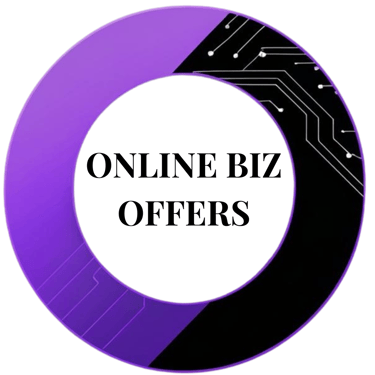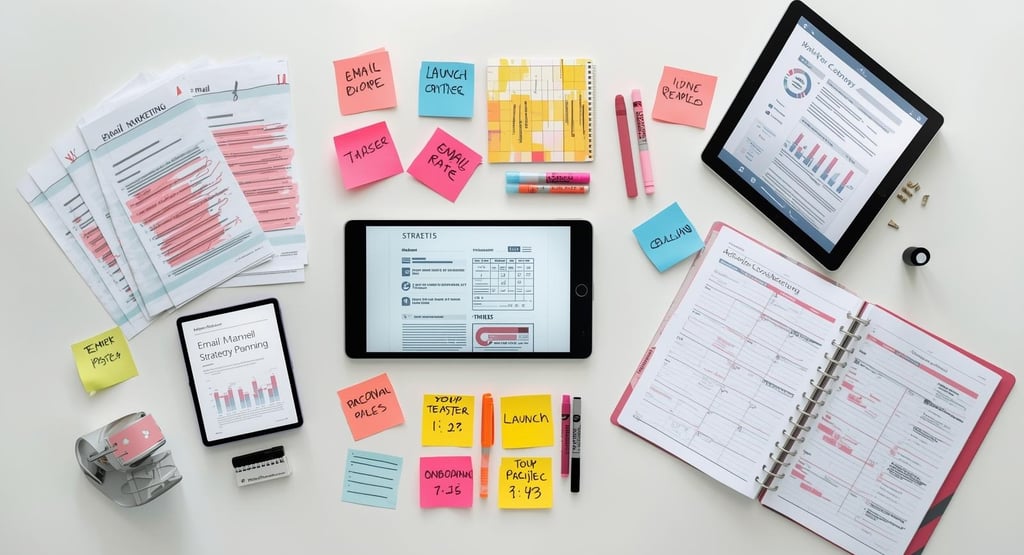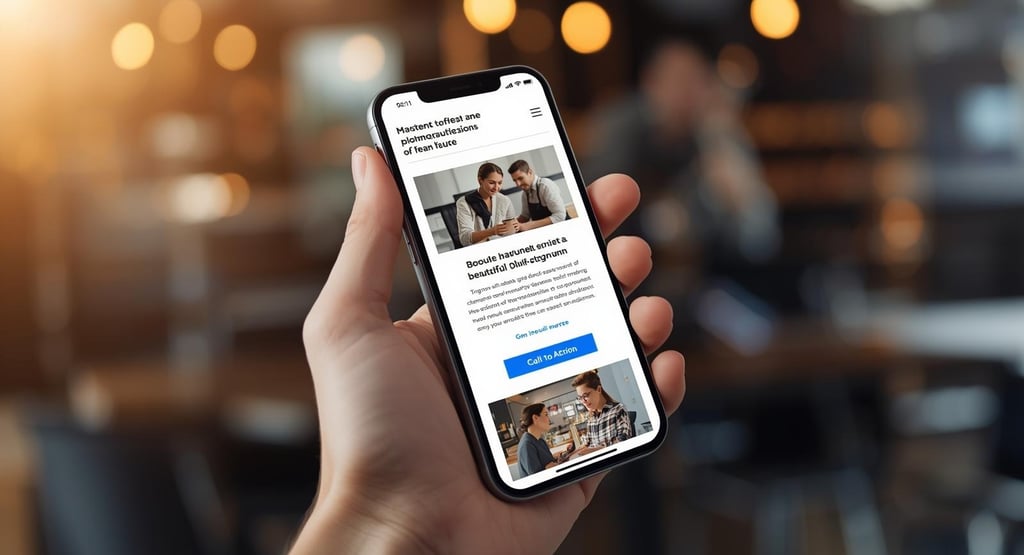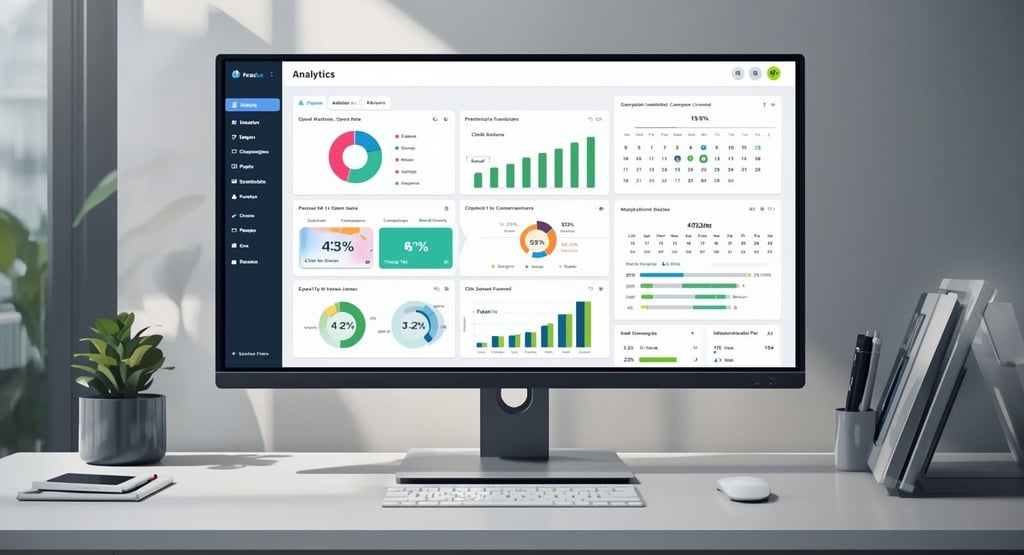Stop Scrolling, Start Creating ⚡ Visit Our Digital Store Now!
How to Turn Launch Day Signups Into Paying Customers With Email Automation
Learn how to turn launch day signups into paying customers with email automation. Get proven templates, workflow strategies, and automation tips that convert cold subscribers into buyers on autopilot. Start converting more today.
DIGITAL MARKETINGMAKE MONEY ONLINEEMAIL MARKETINGE-COMMERCEAFFILIATE MARKETINGONLINE BUSINESS IDEAS
Eddy Enoma
10/27/202514 min read
Why Most Product Launches Fail After Day One (And How to Fix It)
You've spent weeks building your product. You created a beautiful landing page, ran some ads, and collected a decent number of signups. Launch day arrives, you hit send on your announcement email, and then... nothing. Maybe a handful of people buy, but most of your list goes cold. Sound familiar?
Here's the uncomfortable truth: getting signups is the easy part. The real challenge is learning how to turn launch day signups into paying customers consistently. According to recent data, the average email open rate across industries hovers around 21.5%, but conversion rates from email campaigns typically sit between 1-5%. That means if you're not strategically nurturing your list, you're leaving serious money on the table.
The good news? You don't need a massive audience or a complicated tech stack to turn signups into paying customers. What you need is a well-structured email launch sequence that guides people from "mildly interested" to "shut up and take my money." And with the right automation tools, you can set this up once and let it work for every single person who joins your list.
This isn't theory. I've used this exact approach to launch products with real traction, and I'm going to walk you through the entire system, complete with templates you can swipe, automation setups you can copy, and the metrics that actually matter.
Why Email Is Still Your Best Shot at Converting Launch Day Signups
Let's get something straight: social media is rented land. Algorithms change overnight. Your reach gets throttled. Platforms rise and fall. But email? That's the one channel you actually own.
When someone gives you their email address, they're handing you direct access to their inbox. No middleman. No algorithm deciding whether your message gets seen. According to McKinsey, email is nearly 40 times more effective at acquiring customers than Facebook and Twitter combined. And for every dollar you spend on email marketing, you can expect an average return of $36. Show me another channel with that kind of ROI.
But here's where most people get it wrong. They treat their email list like a megaphone, blasting the same message to everyone and hoping something sticks. Real conversion happens when you treat email like a conversation, not a broadcast. That means sending the right message at the right time based on what someone has (or hasn't) done.
Think about it this way: someone who signed up three months ago and never opened an email needs a different approach than someone who clicked every link you sent last week. Smart email automation tools let you create these personalized paths without manually sorting through your list every day.
Here's what a solid email launch sequence actually does for you:
It keeps your product top of mind during those critical first days after someone signs up. Research shows that 80% of sales require five follow-up touches after the initial contact, but most people give up after one or two emails.
It builds trust by delivering value before asking for the sale. People buy from brands they trust, and trust takes time to build. Your sequence should educate, help, and prove your expertise before ever mentioning a price tag.
It segments your audience automatically based on behavior. Someone who opens every email and clicks multiple links is showing high intent. Someone who hasn't opened anything in a week might need a different angle or a pattern interrupt.
It recovers lost opportunities through strategic follow-ups. Not everyone is ready to buy on day one, and that's fine. Your sequence should have built-in checkpoints to re-engage people who showed interest but didn't convert.
The difference between a launch that fizzles and one that gains momentum often comes down to whether you have a system in place to nurture people through their decision-making process. Email automation gives you that system and helps you turn signups into paying customers on autopilot.
The Four Phases Every Successful Launch Sequence Needs
Most people overcomplicate this. You don't need a 47-email sequence with branching logic that would make a software engineer cry. What you need is a clear structure that moves people through a logical journey. Here are the four phases that actually matter:
Phase One: The Teaser (Building Anticipation Before Launch)
This is where you warm up your list and create genuine excitement about what's coming. The goal isn't to sell yet, it's to prime people so they're actually paying attention when you do launch.
Your teaser phase should start about 5–7 days before launch. You want to drop hints about what you're building, why it matters, and who it's for. Share the behind-the-scenes story. Talk about the problem you're solving. Maybe even tease a special offer for people who act fast.
A study by Campaign Monitor found that segmented campaigns drive a 760% increase in revenue. Start segmenting here by tracking who opens and clicks. These engaged readers should get slightly different messaging than the folks who haven't opened anything yet.
Sample emails in this phase might include a "something new is coming" announcement, a story about why you built this product, and a "get ready" email 24 hours before launch. Each one builds on the last, creating a narrative that makes people curious.
Phase Two: The Launch (Announcement and Urgency)
Launch day is when everything you've been building comes together. Your first email should go out the moment your product is available. Be direct, be excited, and make it stupid easy for people to take action.
But here's the thing: one launch email isn't enough. Data shows that 95% of your list won't buy from your first email. That's not failure, that's just reality. People are busy. They forget. They need to see your offer multiple times before making a decision.
Your launch phase should include at least three emails spread over 3–5 days: the initial announcement, a reminder with social proof or a case study, and a final "last chance" email if you're using any kind of deadline or bonus. This systematic approach is crucial when you want to turn signups into paying customers effectively.
This is where capturing leads with the right tools earlier in your funnel pays off. The more quality signups you collected during pre-launch, the bigger your launch day impact.
Phase Three: Onboarding (Activating New Customers)
Congratulations, someone bought! Now what? This is where most launches completely drop the ball. They get the sale and then forget about the customer until it's time to sell something else.
Smart founders know that the real value isn't in the first sale, it's in creating a customer who sticks around. Research from Bain & Company shows that increasing customer retention rates by just 5% can increase profits by 25-95%. Your onboarding sequence is how you lock in that retention.
For the people who bought, your emails should focus on helping them get quick wins with your product. What's the fastest path to value? What do new users commonly get stuck on? How can you reduce friction and make them feel smart for buying?
For people who didn't buy yet, this phase shifts into nurture mode. Share testimonials, answer common objections, offer additional value through content or bonuses. The goal is to stay top of mind without being pushy.
Phase Four: Long-Term Nurture (Retention and Growth)
This is the phase most people skip, which is exactly why you shouldn't. After the initial excitement dies down, you need a plan to keep customers engaged and turn casual users into advocates.
Your nurture phase might include weekly tips for getting more from your product, case studies showing different use cases, requests for feedback, and eventually, opportunities to upgrade or refer friends.
Companies with strong customer engagement see 63% lower customer attrition rates. That engagement doesn't happen by accident. It happens because you have a system to consistently deliver value and stay in touch.
Email Templates You Can Steal (Just Add Your Voice)
Theory is nice, but you're here for practical stuff you can actually use. Here are proven templates for each phase of your launch sequence. These have generated hundreds of conversions across different industries, so feel free to swipe and customize.
Teaser Email Template (5 Days Before Launch)
Subject Line: "I've been hiding something from you..."
Hey [First Name],
I probably should have told you about this sooner, but I've been heads-down building something that I think you're going to love.
It's specifically designed for [your target customer] who are tired of [specific pain point]. I kept running into this problem myself, and every solution out there was either too complicated, too expensive, or just didn't work.
So I built something better.
I'm opening it up in a few days, and I wanted you to be one of the first to know. If you're interested, keep an eye on your inbox. I'll send the details soon.
Talk soon, [Your Name]
P.S. There might be something special for people who jump in early. Just saying.
Launch Announcement Template
Subject Line: "It's here: [Product Name] is officially live"
Hey [First Name],
Remember that thing I mentioned? It's officially live, and you can get access right now.
[Product Name] helps you [main benefit] without [common frustration]. Here's exactly what you get:
[Benefit 1 with specific outcome] [Benefit 2 with specific outcome] [Benefit 3 with specific outcome]
I've spent [time period] testing this with [number] beta users, and the results have been incredible. [Quick testimonial or stat if you have one].
Ready to try it? Click here to get started and you'll be up and running in less than 10 minutes.
And because you're on my list, you're getting [bonus/discount/special offer] when you sign up in the next [timeframe].
Let me know what you think!
[Your Name]
Onboarding Email Template (Sent Immediately After Purchase)
Subject Line: "Welcome! Here's how to get the most from [Product Name]"
Hey [First Name],
Thanks for trusting me with your business. I'm genuinely excited to help you [achieve main outcome].
Let me save you some time and show you exactly how to get your first win:
First, do this: [Specific action with link] Then, check out: [Quick resource or tutorial] Pro tip: [One insider trick that makes things easier]
Most people see results within [timeframe] when they follow this path. If you get stuck or have questions, just hit reply. I read every message.
Looking forward to hearing how it goes!
[Your Name]
P.S. I put together a [bonus resource/community/training] that'll help you get even more value. Access it here.
Setting Up Automation That Doesn't Feel Like Automation
Here's the beautiful thing about modern email platforms: you can create sophisticated, behavior-based sequences without needing a computer science degree. The key is choosing a tool that makes automation intuitive rather than overwhelming.
I've tested most of the major players, and I keep coming back to GetResponse for my automation needs. Here's why it works so well for product launches:
The visual automation builder lets you map out entire sequences by dragging and dropping elements. You can see the whole flow at a glance, which makes it way easier to spot gaps or redundancies. When you're building a launch sequence, being able to visualize the customer journey is huge.
You can create conditional paths based on real behavior. Did someone open your launch email but not click? Send them a different follow-up than someone who clicked three times. Did someone buy? Move them to the customer onboarding path automatically. This kind of smart branching is what helps you turn signups into paying customers at scale.
Everything lives in one place. You're not juggling separate tools for landing pages, email, and automation. When you're in launch mode, the last thing you need is tech overwhelm. Having one platform handle multiple channels keeps things simple.
Here's how to set up your launch sequence step by step:
Start by mapping out your sequence on paper or in a simple document. What emails do you need? What actions should trigger what responses? Don't build in the tool until you have a clear plan.
Create your email templates first. Write all your emails in a document where you can see them together. This helps you catch repetitive language and make sure each email has a clear purpose.
Build your automation workflow using the visual builder. Start with your entry condition (usually "contact subscribed to list" or "contact added tag"). Then add wait periods, emails, and conditions based on behavior.
Set up your tags and segments. Tags are how you track behavior and interests. Someone who clicks your pricing link should get tagged differently than someone who downloads a free resource. Use these tags to create smart segments.
Test everything before going live. Send test emails to yourself. Click every link. Make sure people land on the right pages. Check that your conditions actually work the way you think they do.
The AI email writing feature inside GetResponse can actually help speed up your copywriting if you're stuck. You feed it some context about your product and audience, and it generates draft copy you can customize. It's not perfect, but it's a solid starting point that beats staring at a blank screen.
One thing worth mentioning: you don't need the most expensive plan to start. Their basic automation features work great for most launches. You can always upgrade later if you need more advanced segmentation or higher sending limits.
Mistakes That'll Kill Your Launch (And How to Avoid Them)
I've seen plenty of launches crash and burn, and it's usually because of one of these avoidable mistakes:
Sending too many emails too fast. Yes, you need multiple touchpoints. No, you shouldn't email the same people three times in 24 hours unless you're running a flash sale. Spread your sequence out. Give people time to breathe. A good rule of thumb: no more than one email per day during launch, and fewer than that for nurture.
Forgetting about people who don't open. If someone doesn't open your first launch email, sending them the same follow-up won't help. Try a completely different subject line. Change your angle. Or send from a different email address if they're not opening anything from you.
Making emails too long. People skim. They're on mobile. They have 47 other things demanding their attention. Get to the point faster than you think you need to. One core message per email. One clear call to action. That's it.
Not segmenting based on behavior. Treating your whole list the same is leaving money on the table. Someone who's opened five emails should get different messaging than someone who's opened zero. Use your automation tools to create these segments automatically. This is critical if you want to turn signups into paying customers efficiently.
Ignoring mobile optimization. Over 60% of emails are opened on mobile devices. If your emails look broken on a phone, you're losing more than half your audience. Preview your emails on mobile before sending.
Weak or confusing calls to action. Every email needs to tell people exactly what to do next. "Click here" is boring but clear. "Learn more" is vague. "Get instant access for 40% off" is specific and compelling. Know what action you want people to take and make it obvious.
Not having a plan for non-buyers. Launch week ends, and then what? Most people just stop emailing anyone who didn't buy. Bad move. These people raised their hand and said they were interested. Have a nurture sequence ready that keeps them engaged for weeks or months after launch.
The Metrics That Actually Matter (And What to Do About Them)
You can't improve what you don't measure. Here are the numbers you should be watching and what they tell you about your launch sequence:
Open Rate tells you if your subject lines are working and if people actually want to hear from you. Industry average is around 21%, but for a warm list during a launch, you should be hitting 30-40%. If you're below 25%, your subject lines need work or your sender reputation is damaged.
Click-Through Rate shows whether your email content is compelling enough to drive action. Average CTR is about 2.3%, but during a launch with engaged subscribers, you want to see 5-10%. Low clicks mean your offer isn't resonating or your copy isn't clear enough.
Conversion Rate is the big one. What percentage of people who receive your launch emails actually buy? This varies wildly by price point and audience, but 2-5% is realistic for a warm list. If you're below 1%, something's off with your offer, pricing, or messaging. Understanding this metric is essential when you're trying to turn signups into paying customers.
Unsubscribe Rate shows if you're annoying people or sending irrelevant content. During a launch, a small spike is normal (some people only wanted the free content). But if you're losing more than 0.5% per email, you're doing something wrong.
Time to Conversion tells you how long it takes someone to buy after entering your sequence. This helps you understand how many touchpoints people need and where in your sequence conversions happen most often.
Here's how to use this data: if open rates drop sharply after email two, your second email probably turned people off. If clicks are high but conversions are low, your landing page or checkout process needs work. If conversions happen mostly after email four, maybe you can shorten your sequence.
A/B testing is your friend here. Test different subject lines on 20% of your list, then send the winner to the other 80%. Test different calls to action. Test different send times. Even a 10% improvement in open rates can double your revenue from the same size list.
Your Next Steps: Putting This Into Action
You've got the strategy. You've got templates. You know what tools to use and what mistakes to avoid. Now it's time to actually build your launch sequence and start converting those subscribers.
Start simple. You don't need a perfect 15-email sequence with complex branching logic on day one. Start with the basics: a teaser email, a launch announcement, a reminder, and a simple onboarding email. Get that working, then add complexity.
Set up your automation platform and spend an hour playing with the workflow builder. The best way to learn is by doing. Build a simple test sequence and send it to yourself. See how it feels from the recipient's side.
If you haven't started collecting emails yet, get your lead capture system in place before you worry about sequences. You can't turn signups into paying customers if you don't have signups in the first place.
Most importantly, launch imperfect. Your first sequence won't be perfect, and that's fine. You'll learn more from one real launch than from six months of planning. Send the emails, watch what happens, and adjust based on real data.
The ability to turn signups into paying customers with email automation isn't magic. It's a system. And once you have that system in place, every new signup becomes an opportunity for automated revenue. That's the kind of leverage that actually scales.
Want help reviewing your launch sequence before you go live? Need someone to look at your automation setup? Just reach out. I love talking about this stuff and helping people turn their launches into actual revenue generators.
Want more templates, case studies, and advanced automation breakdowns delivered straight to your inbox? Sign up for the newsletter below.
Subscribe for Exclusive Tips & Updates. Enter Your Email Below!



Get the latest strategies to create, automate, and monetize with AI, content, and digital marketing straight to your inbox!
🔒 We respect your privacy. Your email is safe with us. Unsubscribe anytime.
Address
Sporerweg 16
94234 Viechtach, Germany
Contacts Us
(049) 170 499 6273
Subscribe to our newsletter
© 2025 Onlinebizoffers. All rights reserved.












